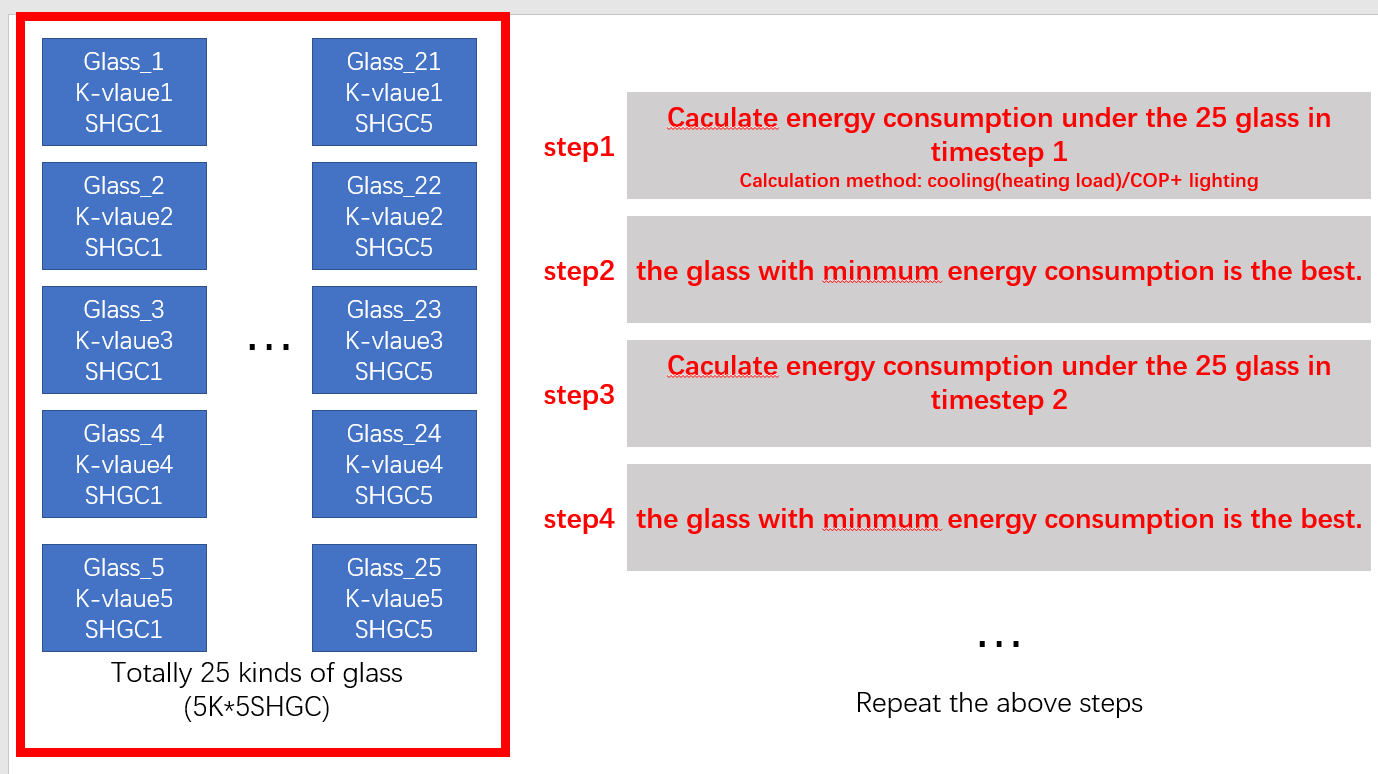Dear All, I am working on the hourly (or timestep) optimal thermal performance (K-value, SHGC) of the adaptive glazing.
Although there are some reserach on adaptive glazing,such as the examplefile EMSThermochromicWindow.idf, they only prove the energy efficiency rate of the construction and cannot indicate the best.Therefore, I want to find out how the thermal performance should be changed in the typical day.
I have the following route with reference to the examplefile EMSThermochromicWindow.idf.
First, set 25 kinds of glasses in the Class material and Window. Second, calculate the energy consumption in each timestep under 25 glasses.However, the calculation method is complicated and cannot be obtained directly in output:variable. Third, By comparison, the glass with minimum energy consumption is the best. In the next timesteps, repeat the above steps.
But now I have some problems as following:
1. The above uses only the EMS. Is it possible to compare the energy consumption in the same room under different glass?For example,
Set glass = glass1
IF glass_cooling/cop + glass_lighting > glass2_cooling/cop + glass2_lighting
Set glass = glass2
IF glass_cooling/cop + glass_lighting > glass3_cooling/cop + glass3_lighting
Set glass = glass3
...Repeat until glass25
output:variable cooling load and lighting in thermal zone
In my opinion, it is undesirable because energyplus can only simulate once and cannot simulate in parallel.
2.I consulted some friends and they told me it should use co-simulation such as pyfmi. Then I read the FMU useguide (FMU Export of EnergyPlus)and study the practice in it. But it is still difficult to realize the simulation.
3.Could you please tell me if the above problems can be solved by EMS or pyfmi? What is the specific solution and have any idf or fmu references or cases? Is there anything wrong in the route?
Thank you for your help and suggestion!





